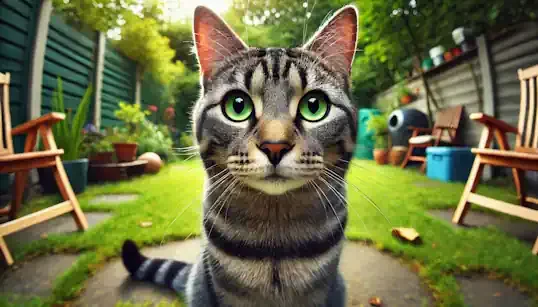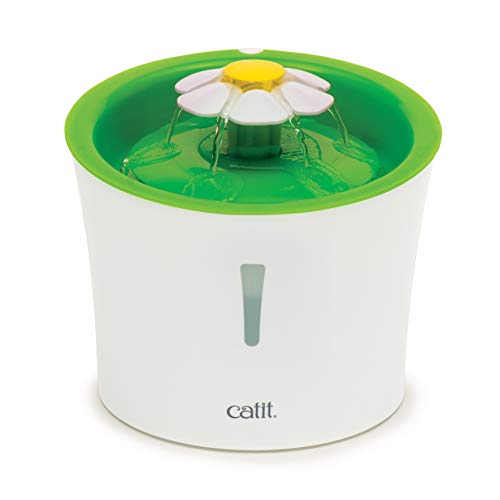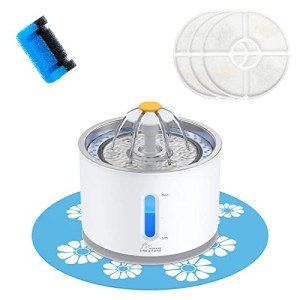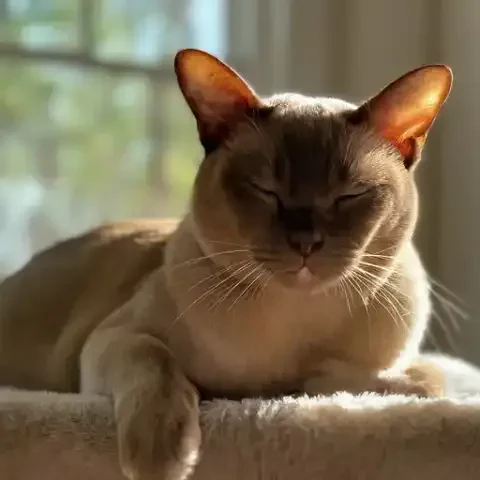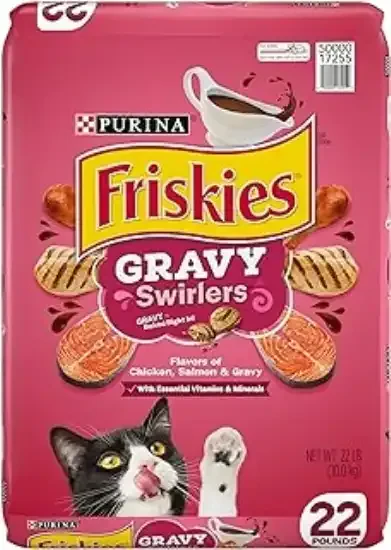Ever noticed how many cats seem to sport stripes, swirls, or spots? Take a look around at feline photos online, in shelters, or even in your own home, and chances are, you’ll spot a tabby – or ten! These fabulously patterned felines are everywhere, gracing our lives with their classic good looks and endearing charm. But what exactly is a tabby cat? Is it a breed? A color? Prepare to have all your tabby mysteries solved! Welcome to your ultimate, fun-filled guide to the wonderful world of tabby cats, where we'll unravel the secrets behind those mesmerizing patterns, explore the rainbow of tabby colors, bust some personality myths, and shower you with fun facts guaranteed to make you appreciate tabbies even more. Get ready to dive into the delightfully patterned universe of tabby cats – it's going to be purrfectly fun!
Let's clear up a super common kitty misconception right away: tabby is a pattern, not a breed! Say it with me now: "Tabby is a pattern, not a breed!" This is probably the most crucial thing to understand about tabby cats. "Tabby" describes a coat pattern, a gorgeous design that appears on a cat’s fur, and it’s not related to any specific breed. Think of it like "striped" or "polka-dotted" when talking about fabric – it’s a design element, not the type of fabric itself. Just like you can have striped shirts, dresses, and pants, you can have tabby Persians, tabby Maine Coons, tabby American Shorthairs, tabby British Shorthairs… you name it, chances are, that breed can come in a tabby pattern! Essentially, any domestic cat, whether they're a purebred pedigree with a fancy name or a charming mixed-breed from your local shelter, can proudly sport a tabby coat. The tabby pattern is that versatile and widespread in the feline world! So next time you see a cat with stripes, spots, or swirls, remember, you're admiring a tabby cat, and appreciating a beautiful coat pattern, not necessarily a specific breed.
Now, let's take a trip back in time to explore the ancient origins of this iconic pattern. The tabby pattern isn't some modern invention; it's deeply rooted in feline evolution, considered a "wild-type" or ancestral coat pattern for cats. Think of it as the original cat coat! Scientists believe that the tabby pattern was the natural camouflage coat for wildcats, offering excellent concealment in their natural environments. Whether it was stripes for blending into tall grasses, spots for dappled forests, or ticked patterns for subtle camouflage, the tabby design provided a survival advantage for wild felines for millennia. When domestic cats came into being, they inherited this tabby pattern from their wild ancestors. So, when you admire a tabby cat today, you're gazing upon a pattern that has graced felines for ages, a living link to the wild ancestry of our beloved domestic companions. It’s a pattern woven into the very DNA of cats!
And speaking of beauty, let's banish the idea that tabby cats are "just striped." Oh no, my friend, the tabby world is so much more than just stripes! While stripes are definitely part of the tabby family, there's a whole kaleidoscope of gorgeous tabby designs out there, a veritable pattern playground for feline fashionistas! It’s not just about simple lines; get ready to explore swirls, spots, ticks, and patches! Think of it as a wardrobe of different tabby "looks," each one unique and captivating in its own right. Prepare to be amazed by the sheer variety of tabby patterns – it's far more diverse and exciting than you might have ever imagined! From the classic and recognizable to the subtle and sophisticated, the tabby pattern offers a design for every taste, a testament to nature’s creativity and the endless beauty found in the feline world. And the best part? These patterns are incredibly visually appealing to us humans! There's something inherently pleasing about the natural, classic, and versatile tabby patterns. They are familiar, comforting, and simply beautiful to look at. It's no wonder tabby cats are so incredibly common and loved worldwide! Their visual appeal is undeniable, their patterns timeless, and their charm universally appreciated.
Alright, pattern enthusiasts, buckle up because we're about to meet the "Fab Five" – the five classic tabby patterns! Consider this your official tabby pattern introduction, a fun "meet and greet" with the stars of the tabby show. Get ready to identify your tabbies like a pro! First up, let's give a warm welcome to the Classic Tabby, also known as the Blotched or Marbled tabby! This is the tabby pattern that brings to mind elegant swirls, mesmerizing whorls, and almost oyster-like markings. Imagine looking at a miniature jungle cat sculpted with sophisticated swirls and sophisticated designs. Classic tabbies are defined by their bold, swirling patterns that grace their sides, creating a marbled or blotched effect that's truly captivating. Look closely at their shoulders, and you might spot a distinctive "bullseye" or butterfly pattern, a circular marking that adds to their regal charm. And let's not forget those broad stripes that run down their back, completing the classic tabby masterpiece. Visual cues for the Classic Tabby? Think "marbled cake," the intricate beauty of an "oyster shell," or even a "target" marking on their sides. The tone of the Classic Tabby? Regal, sophisticated, and utterly charming, like a tiny jungle feline dressed in elegant swirls, embodying a timeless feline beauty.
Next, get ready to meet the energetic and instantly recognizable Mackerel Tabby, also known as the Striped Tabby, or even the "Tiger Tabby"! This is the tabby pattern that screams "classic cat," instantly recognizable and undeniably appealing. Mackerel tabbies are defined by their vertical stripes that run parallel down their sides, often described as resembling fish bones or tiger stripes. These stripes are typically narrow, clear, and often unbroken, creating a distinct linear pattern. Look for banded legs and tails, adding to the striped effect, and charming "necklaces" of stripes that adorn their chest, completing their athletic and energetic look. Visual cues for the Mackerel Tabby? Think "tiger stripes," the clear lines of a "fish skeleton," and distinct vertical stripes that define their athletic build. The tone of the Mackerel Tabby? Energetic, athletic, and undeniably classic, the "tiger" tabby is instantly recognizable and forever charming, embodying the essence of feline agility and grace.
Now, prepare for a touch of the exotic – it's time to meet the Spotted Tabby! Instead of stripes or swirls, spotted tabbies are adorned with… you guessed it, spots! Spots, spots, everywhere! Spotted tabbies break away from the linear patterns, displaying spots all over their body, creating a striking and playful appearance. These spots can vary delightfully in size and shape, ranging from small, round dots to larger, oval markings, and even sometimes exhibiting rosette-like patterns reminiscent of a jaguar or leopard! In some cases, you might even see broken mackerel stripes that appear as distinct spots, blurring the lines between patterns and adding to their unique charm. Visual cues for the Spotted Tabby? Think the captivating spots of a "leopard" or the rosette patterns of a "jaguar" (sometimes!), creating a visually striking and playful coat. The tone of the Spotted Tabby? Exotic, wild, and undeniably eye-catching, the spotted tabby brings a touch of the jungle to your living room, reminiscent of their wild feline cousins.
For a touch of understated elegance, let's welcome the Ticked Tabby, also known as the Abyssinian Tabby, Agouti Tabby, or simply "Ticked"! If you're expecting stripes, spots, or swirls on the body, prepare to be surprised! Ticked tabbies are unique because they display no stripes, spots, or swirls on their body! Instead, their "ticked" appearance comes from agouti hairs. Each individual hair is banded with different colors, creating a subtly varied and salt-and-pepper look that's incredibly refined. While their body might be pattern-free, don’t worry, they're still definitely tabbies! Look for classic tabby markings typically only on their face and legs, and sometimes, in kittens, you might even glimpse faint "ghost stripes" that fade as they mature. Visual cues for the Ticked Tabby? Think a "salt and pepper" look, a subtly varied coat with no obvious patterns on the body, but classic tabby markings clearly visible on their face and legs. The tone of the Ticked Tabby? Subtle, sophisticated, and undeniably elegant, the ticked tabby embodies "understated elegance," showcasing the tabby pattern in a refined and uniquely beautiful way.
And last, but certainly not least, get ready for a burst of color and pattern – it’s time to meet the Patched Tabby, also known as the Torbie, short for Tortoiseshell Tabby! Patched tabbies are a delightful "best of both worlds" feline fashion statement. They are essentially tortoiseshell cats with tabby patches! Imagine a cat showcasing a base tabby pattern – often classic or mackerel – but then sprinkled with captivating patches of red, orange, or cream, the signature colors of a tortoiseshell cat! These tortoiseshell patches can be distinct and clearly defined, or they can be beautifully intermingled with the tabby pattern, creating a stunningly unique and vibrant coat. Visual cues for the Patched Tabby? Think tabby stripes or swirls plus tortoiseshell coloring, resulting in delightful red, orange, or cream patches overlaid on the tabby pattern. The tone of the Patched Tabby? Unique, colorful, and undeniably special, the patched tabby combines the best of both worlds, blending tabby patterns with tortoiseshell vibrancy, and often, adding an extra touch of feline fabulousness – as they are typically female!
Now that we’ve met the Fab Five tabby patterns, let’s explore the rainbow of colors they can come in! Think of the tabby pattern as the design of the cat's coat, the framework, if you will. And color? Well, color is what fills in that fabulous design, bringing it to life! Tabby patterns aren't limited to just one or two colors; they can occur in almost all cat colors imaginable! The possibilities are truly vast. Let's highlight some of the most common and beloved tabby colors. First, we have the Brown Tabby. This is perhaps the most common and classic tabby color, a timeless and instantly recognizable feline favorite. Brown tabbies showcase brown or black markings on a warm brownish base, creating a rich and earthy palette. Then we have the sleek and sophisticated Grey or Silver Tabby. These tabbies display grey or silver markings on a silver or greyish base, creating a cool and elegant appearance. You might also hear them called "silver mackerel," "blue tabby," or similar variations, depending on the specific shade. For a burst of warmth and sunshine, we have the Red Tabby, also known as the Ginger Tabby, Orange Tabby, or even the charming "Marmalade Cat"! Red tabbies boast red or orange markings on a cream or ginger base, creating a fiery and warm coat. Often associated with male cats (though female red tabbies definitely exist!), they are sunshine in feline form. For a touch of delicate softness, let's admire the Cream Tabby. These tabbies display pale cream markings on a lighter cream or white base, creating a very subtle and gentle color palette. Cream tabbies are the epitome of feline softness and understated beauty. And remember, these are just a few of the common tabby colors! You can also find tabbies in chocolate, cinnamon, and a whole host of other less common but equally beautiful color variations, showcasing the incredible diversity of tabby cats. But no matter the color, tabbies share some special markings, almost like a "Tabby Starter Pack" of classic tabby traits! Think of the iconic "M" marking on the forehead. Almost all tabby cats, regardless of their pattern or color, sport this distinctive "M" on their brow! There’s folklore and myths aplenty surrounding this "M," adding a touch of mystique to this common marking. And then there's the "eye liner effect". Tabbies often have dark lines that outline their eyes, making their eyes appear to pop and adding to their expressive gaze. And let's not forget the brick red nose leather and paw pads. While not universal to all tabbies, this warm, reddish-brown hue is often seen, especially in brown tabbies, adding a touch of warmth and charm to their appearance. And a delightful bonus? Tabby patterns can even combine with white markings! The tabby pattern can be beautifully interwoven with white spotting, creating bicolor or even tricolor (calico or tortoiseshell with tabby patches) cats, showcasing even more stunning variations of the tabby design!
Now, let's address a question that often pops up: Do tabby cats have a specific personality? Is there such a thing as a "tabby personality?" Let's dive into the myth versus reality of tabby temperaments! The truth is, while the idea of a "tabby personality" is a fun notion, it's largely a myth! Temperament in cats is incredibly individual. A cat's personality is shaped by a complex interplay of factors – genetics, yes, but also their upbringing, their socialization experiences, and their environment. Coat pattern, like tabby, is not a direct determinant of personality. You can meet friendly and aloof tabbies, playful and laid-back tabbies, vocal and quiet tabbies – the personality spectrum is just as diverse in tabbies as it is in cats of any other coat pattern! However, it's interesting to note that certain common traits are often reported by tabby cat owners. Many tabby owners describe their cats as friendly and affectionate, reporting that their tabbies are very loving, cuddly, and enjoy human companionship. Tabbies are also frequently described as intelligent and playful, enjoying interactive play sessions and showing a keen interest in toys and games. And some believe tabbies tend to be easygoing and adaptable, adjusting relatively well to different households and lifestyles. You might also hear tabbies described as confident and outgoing, although this is more of a general observation and not a hard and fast rule. But if tabby pattern doesn't dictate personality, why does this "tabby personality" myth persist? There are a few possible reasons. Firstly, tabbies are so incredibly common! People simply have more experiences interacting with tabby cats, leading to generalizations based on sheer numbers. Secondly, many popular and friendly cat breeds, like the American Shorthair and Maine Coon (and mixes of these breeds) are often found in tabby patterns. This might lead to an association between tabby patterns and these breeds' generally friendly temperaments. And finally, confirmation bias might play a role. If people expect a tabby cat to be a certain way (friendly, playful, etc.), they might be more likely to notice and remember behaviors that fit that expectation, reinforcing the myth. The real key takeaway? Personality is individual! When choosing a feline companion, focus on the individual cat's personality, energy level, and temperament, not just their tabby pattern! Every cat is unique, and finding a cat whose personality meshes well with yours is far more important than getting hung up on coat pattern stereotypes.
Let's wrap up our tabby adventure with some fun facts you might not know! Did you know that the word "tabby" itself has a fascinating history? It's believed to come from "Attabiyah," a district in Baghdad famous for producing striped silk! This striped silk fabric, known as "tabbi silk," eventually lent its name to the striped cat pattern – how cool is that? And here's another mind-blowing tabby tidbit: The tabby gene is dominant in cats! That's why tabby patterns are so incredibly common – the genetic predisposition for tabby is strong. In fact, get this – all domestic cats are genetically tabby to some extent! Even solid color cats carry the tabby gene! In solid-colored cats, other genes simply mask the tabby pattern, hiding it beneath a solid coat of color. But underneath, the tabby blueprint is still there! And speaking of hidden patterns, sometimes, in certain coat colors or dilutions, the tabby pattern can be incredibly faint or "ghostly." This is particularly noticeable in pointed cats like Siamese, where "ghost stripes" might subtly appear within their points, adding a whisper of tabby to their elegant appearance. And lastly, just to reiterate their global dominance – tabby cats are truly everywhere! They are the most common coat pattern in domestic cats worldwide, and they have been beloved pets throughout history and across cultures, a testament to their enduring appeal and ubiquitous charm. So, next time you spot a tabby, remember these fun facts and appreciate the long and fascinating history behind that beautiful, patterned coat!
When it comes to caring for your tabby companion, the good news is… general cat care applies! There's no special "tabby care manual" needed. Caring for a tabby cat is essentially the same as providing loving care for any feline friend. The basics of cat care are universal, regardless of coat pattern. Make sure your tabby has a high-quality diet appropriate for their age and health needs. Fresh water should always be readily available. Keep their litter box clean – a happy cat needs a clean bathroom! Provide scratching posts to satisfy their scratching instincts and protect your furniture. Engage them in playtime and offer enrichment to keep them mentally and physically stimulated. Grooming, as we’ve already discussed, is wonderfully low-maintenance for most tabbies. Regular vet check-ups are essential for preventative healthcare and early detection of any health concerns. And most importantly of all, shower your tabby with love and attention! Social interaction and bonding are crucial for their well-being and happiness. The golden rule of tabby care? Tailor the care to the individual cat, not just their pattern! Remember that care should always be individualized based on your cat's specific age, health status, activity level, and unique personality – tabby or not! What works perfectly for one tabby might not be ideal for another, so always pay attention to your individual cat's needs and preferences.
Ready to find your purrfect tabby pal? Adoption is an absolutely wonderful choice when it comes to tabbies! Shelters and rescues are often overflowing with adorable tabby cats of all ages, patterns, and personalities, all desperately waiting for loving homes. Adopting a tabby cat from a shelter is an incredibly rewarding experience. You're giving a deserving cat a second chance at happiness, opening your heart and home to a feline in need. And adult tabby cats in shelters can be particularly appealing, as you can often get a good sense of their individual personality before you bring them home, helping ensure a good match for your household. While finding a tabby through a breeder isn't usually necessary (given their abundance in shelters!), if you are specifically seeking a certain breed that also happens to be tabby, like a Maine Coon tabby kitten, then researching reputable breeders of that specific breed is the way to go. If you choose to go through a breeder, always prioritize responsible breeding practices, ensuring the breeder health tests their cats, prioritizes socialization, and is dedicated to the well-being of their animals. But honestly, finding a "tabby" cat is wonderfully easy! They are so common and widespread that you are likely to find many adorable tabbies in your local shelters and rescues right now! Pay a visit, meet some of these patterned beauties, and you might just find your new best friend, a purrfectly patterned package of feline love and companionship! And when you are choosing a cat, remember to focus on connection! Look for a cat whose personality and energy level mesh well with yours, whose purrs resonate with your heart, and whose meows speak to your soul – regardless of whether they are striped, swirled, spotted, or ticked! The purrfect tabby pal is waiting for you, ready to bring their tabby magic into your life!
So, let's wrap up our fun tabby adventure! Remember these key takeaways: Tabby is a pattern, not a breed, and it comes in a dazzling array of diverse and beautiful designs. From classic stripes to mesmerizing swirls, playful spots, and understated ticks, the tabby pattern is a testament to nature's artistic flair. Tabbies often sport those special "tabby starter pack" markings, like the iconic "M" on their forehead, adding to their charm. While personality isn't dictated by coat pattern alone, individual tabby cats are often described as friendly, playful, and intelligent, making wonderful companions. And the best part? Tabby cats are incredibly easy to find and even easier to love! The appeal of tabby cats is undeniable. Their classic good looks are timeless, their commonality makes them instantly relatable, and their potential for providing wonderful companionship is immeasurable. So, embrace the tabby magic! Whether they're striped like a tiger, swirled like marble, spotted like a leopard, or ticked with subtle elegance, tabby cats are truly amazing companions, ready to fill your life with purrs, playfulness, and patterned beauty. Go out and meet some tabbies – visit your local shelter, admire the tabby cats you see around you, and you might just find your new best friend in a purrfectly patterned feline package, ready to shower you with tabby love!
